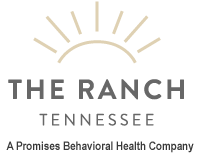Alcohol use disorder and cannabis use disorder are frequently co-occurring or comorbid substance problems in both teenagers and adults, a group of U.S.-based researchers report. Comorbid conditions are health problems that appear together in one person and cause more difficulties for that person than they would on their own. In a study published in January 2015 in the journal Drug and Alcohol Dependence, researchers from the Oregon Research Institute looked for signs of overlap between alcohol use disorder and cannabis use disorder in men and women as they gradually move from adolescence to adulthood. These researchers concluded that the two substance-related issues are comorbid, although the closeness of their connection typically varies over time. If you believe your loved one is struggling with cannabis use disorder, it’s time to seek out an addiction treatment program that can help.
Alcohol Use Disorder
Prior to 2013, mental health guidelines commonly used by doctors across America identified the existence of two separate and distinct forms of diagnosable alcohol problems: alcohol dependence (often referred to by the popular term alcoholism) and alcohol abuse. People affected by alcohol dependence had any combination of three out of seven possible symptoms. Examples of these symptoms included rising tolerance to the effects of alcohol, a recurring inability to fulfill a stated desire to put limits on alcohol consumption, the appearance of withdrawal if alcohol intake levels fail to meet the minimum amount required to sustain dependence and an excessive devotion of time and/or resources to alcohol acquisition or recovery from drinking bouts. People affected by alcohol abuse had at least one out of four possible symptoms, which included repeated and alcohol-related failure to meet obligations or responsibilities, repeated alcohol intake is clearly dangerous conditions or situations, and continuing involvement in drinking after exposure to clearly negative fallout from alcohol use. Doctors and researchers had long realized that some of the symptoms associated with alcohol dependence often appeared in people who only met the criteria for diagnosing alcohol abuse. They also realized that a person with diagnosable alcohol abuse often had clear indications of alcohol dependence. The American Psychiatric Association created the alcohol use disorder diagnosis in May 2013 and thereby made it possible for doctors to count symptoms of alcohol dependence and alcohol abuse as common indicators of a single alcohol-related ailment.
Cannabis Use Disorder
Cannabis use disorder has a definition that’s similar to the definition of alcohol use disorder. However, instead of having symptoms related to addicted or non-addicted alcohol intake, affected individuals have symptoms related to the addicted or non-addicted intake of marijuana or either of two other cannabis products called hashish and hashish oil. There is a growing trend in American society to deemphasize the harms associated with marijuana/cannabis intake. Despite this fact, even after excluding any issues associated with non-addicted but dysfunctional intake of the drug, almost one out of every 10 marijuana consumers in the U.S. meets the criteria for cannabis use disorder.
Are the Two Disorders Comorbid?
Doctors, researchers, and public health officials make note of comorbid mental and/or physical conditions because people affected by such overlapping problems typically have a substantially heightened level of exposure to serious short- and long-term health complaints. In the study published in Drug and Alcohol Dependence, researchers used information provided by 816 adult men and women to see how often substance users have comorbid cases of alcohol use disorder and cannabis use disorder. The researchers looked for an overlap at three points in time: childhood/adolescence, young adulthood and subsequent years of adulthood. After reviewing the past and current histories of the study participants, the researchers concluded that alcohol use disorder and cannabis use disorder appear together in a significant number of cases in childhood/adolescence, young adulthood and later years of adulthood. They also concluded that three relevant sequences of events can occur among alcohol and cannabis consumers who develop comorbid problems: alcohol use disorder in childhood/adolescence followed by the addition of cannabis use disorder in early adulthood, cannabis use disorder in childhood/adolescence followed by the addition of alcohol use disorder in early adulthood and cannabis use disorder in childhood/adolescence followed by the addition of alcohol use disorder in later stages of adulthood. The study’s authors note that the same relationships and patterns associated with comorbid alcohol use disorder and cannabis use disorder in men also largely occur in women, although some gender-based difference does occur. They also note that the connected patterns of alcohol and cannabis problems found in childhood/adolescence appear again in later adulthood but in a weaker form. Help your loved one overcome cannabis use disorder by calling 1.844.876.7680.


